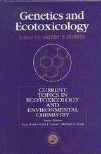Papers in the Biological Sciences

Valery Forbes Publications
Document Type
Article
Date of this Version
9-2000
Abstract
Toxic effects of the polycyclic aromatic hydrocarbon fluoranthene (FLU) on life-history traits and their demographic consequences were investigated in 3 non-interbreeding Capitella sibling species with different physiological tolerances and developmental modes: sensitive Capitella sp. S from oxygen-rich intertidal sediments of the North Sea (Germany); tolerant Capitella sp. M from sediments near shallow hydrothermal vents off Milos (Greece), a habitat low in organic matter with steep abiotic gradients and high sulfide concentrations; tolerant Capitella sp. I from New York (USA), known to dominate eutrophicated/polluted environments. Both Capitella spp. M and I can develop into hermaphrodites and have lecithotrophic larval development. In contrast, Capitella sp. S appears to be dioecious and has direct development with benthic juveniles. In life-table-response experiments (LTRE), juveniles from the 3 species were raised under different FLU concentrations (0 to 95 μg g–1 FLU), and data on age-specific survival, growth and life-history parameters were recorded at weekly intervals. Under control conditions, the 3 Capitella species differed markedly in a number of life-history traits and population growth rates (λ), with Capitella sp. S showing the lowest λ (1.05), and Capitella sp. M the highest (1.42). Chronic exposure to increasing FLU concentrations also revealed species-specific differences in individual- and population-level toxic responses. Highest FLU concentrations (95 μg g–1) markedly reduced juvenile survival and completely inhibited reproduction in Capitella sp. S, whereas individual life-history traits in Capitella spp. M and I were affected little, if at all. At the population level, the highest FLU exposures resulted in λ values of effectively zero in Capitella sp. S, whereas λ of Capitella spp. M and I remained >1. In conclusion, the combination of opportunistic life-history features, reproductive flexibility, and physiological adaptations enables Capitella spp. M and I to colonize habitats rapidly after local disturbance and to persist in stressed and unpredictable environments; whereas in Capitella sp. S, population extinction under toxicant stress mainly results from its physiological sensitivity.


Comments
Published in MARINE ECOLOGY PROGRESS SERIES Vol. 203: 191–203, 2000. Copyright © Inter-Research 2000. Used by permission.